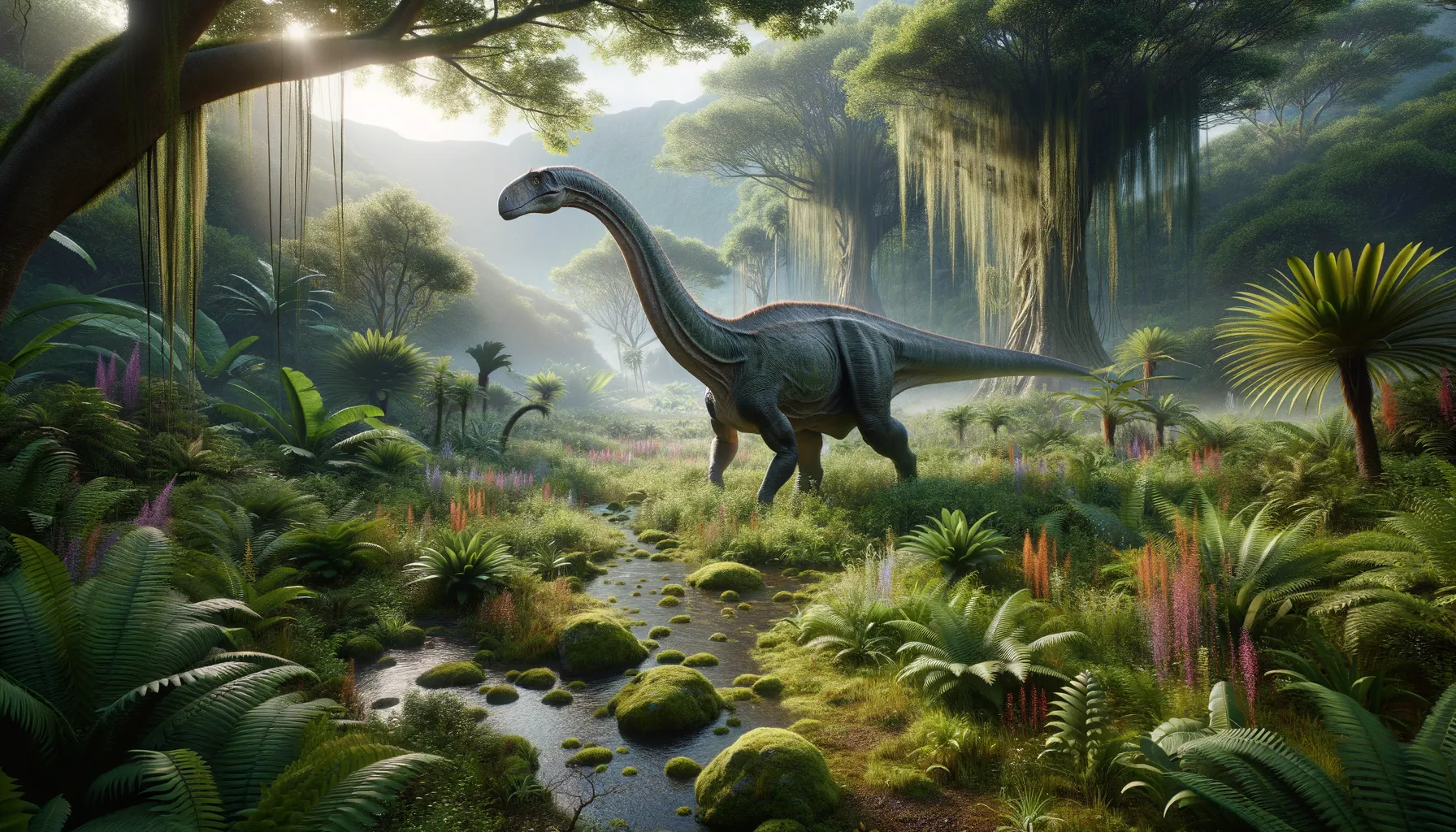
Tendaguria
Giant of the Jurassic, king of the land!
Period
Jurassic
Length
About 20 meters long.
Height
Around 4 meters tall at the hip.
Weight
Approximately 20-30 metric tons.
Tendaguria was a massive herbivorous dinosaur that roamed the Earth during the late Jurassic period. Its discovery in Tanzania has provided valuable insights into the sauropod family. Known for its long neck and substantial body size, Tendaguria thrived in a lush, plant-rich environment, which supported its immense dietary needs. Despite its formidable size, this dinosaur likely moved slowly and spent much of its time feeding on high vegetation.
Diet
Tendaguria was a herbivore, feasting on a variety of plants that grew in its habitat. With its long neck, it could reach high vegetation, allowing it to access a plentiful food supply.
Hunting
As a herbivore, Tendaguria did not engage in hunting. Its primary activity would have been foraging for plant material to sustain its massive size.
Environmental challenges
Tendaguria faced challenges such as fluctuations in climate, which could affect the availability of plant life for feeding. Predators in the area could also pose a threat, particularly to younger or weaker individuals. The dinosaur's large size likely provided some protection, but it still needed to be vigilant to survive.
Speed
Relatively slow-moving due to its large size.
Lifespan
Estimated to live up to 70-80 years.
First discovery
Discovered in Tanzania in 1911.
Fun Facts
- Tendaguria is a dinosaur from the Late Jurassic period, around 150 million years ago.
- It was discovered in the Tendaguru Formation in Tanzania, which is one of the richest dinosaur fossil sites in Africa.
- Tendaguria was a sauropod, meaning it was a long-necked, herbivorous dinosaur.
- Unlike many other sauropods, its remains suggest it had a relatively flat body structure.
- Tendaguria is known from a few fossil fragments, making this dinosaur quite mysterious and piecing together its story is a bit like a puzzle.
- Fossils of Tendaguria were first discovered in the early 20th century, but it wasn't until the 1990s that it was named and described as a new genus.
- Due to limited fossil evidence, scientists know little about the exact size and weight of Tendaguria, adding a layer of intrigue to its history.
Growth and Development
Tendaguria likely experienced rapid growth in its early years to reduce vulnerability to predators. As it grew, its immense size would become a defensive advantage. This growth required a constant intake of food, so maintaining a consistent food supply was critical for its development.
Habitat
Tendaguria inhabited the lush, forested areas of what is now Tanzania during the late Jurassic. The region was rich in plant life, which supported its dietary needs. The environment provided both food and relative safety from smaller predators.
Interaction with other species
Tendaguria coexisted with other dinosaur species, including both herbivores and carnivores. It might have engaged in herding behavior for protection against predators. Despite its size, it would have been part of a complex ecosystem that included various species competing for resources.
Natural lifespan
Tendaguria's natural lifespan was likely similar to other large sauropods, around 70 to 80 years.
Reproduction
Tendaguria, like most sauropods, probably reproduced by laying eggs. These eggs were laid in nesting sites where environmental conditions were favorable for incubation. The young would need to grow quickly to avoid predators as they matured into adulthood.
Social behaviour
While specific social behaviors are not well-documented, Tendaguria might have exhibited herd-like behavior, common among large herbivores, for mutual protection. This social structure could help in guarding against predators and in finding abundant feeding grounds.
Fossil locations
The first Tendaguria fossils were found in the Tendaguru Formation in Tanzania. This area is known for being rich in dinosaur fossils, providing evidence of a diverse range of species that lived during the late Jurassic period. Continued exploration of this region has helped piece together the lifestyle and environment of this impressive dinosaur.
